

Situated on the island of Borneo, Brunei Darussalam is an absolute monarchy and a sovereign state. Categorised as a developed country by the IMF, it is one of the most prosperous nations in Southeast Asia, ranking second on the human development index in the region.
Brunei has a strong manufacturing and shipping sector based on the oil and natural gas industry. It is the fourth biggest oil exporter in South Asia. Finance and tourism are other main contributors to the GDP.
The Sultanate depends on other countries for meeting 60 per cent of its food requirements. It is a part of many international organisations and has signed a memorandum of understanding with the Philippines for increased bilateral cooperation in the field of agriculture and related investments.
Brunei has a 161-kilometre coastline, facing the South China Sea. Described below are the six ports of Brunei.
A semidiurnal tide harbour, Muara is positioned at the entrance of Brunei Bay, north of Sarawak. It was constructed in 1973 and is the largest port of Brunei handling raw material, cement, container goods, automobiles, construction machinery, livestock, perishable items etc. About 1,100,000 tonnes of general cargo and 27,000 TEUs are handled at the port annually.
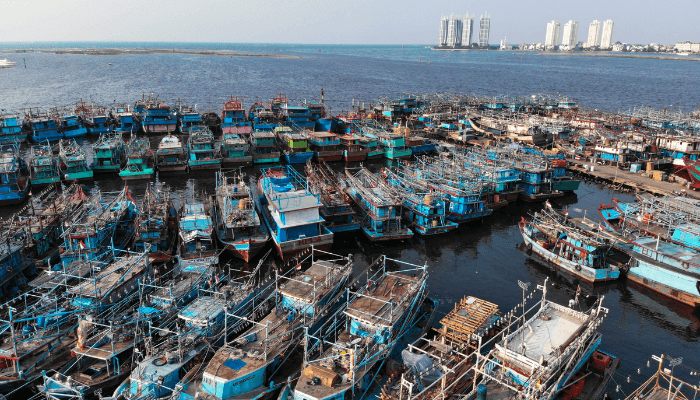

An international deepwater port, it has direct shipping connections to the port of Shanghai, Guangzhou, Manilla, Vietnam, Thailand, Hong Kong and Kuala Lumpur.
Container terminal
The container handling facility has a 250-metre-long berth with an alongside depth of 12.5 metres. It covers 5000 m2 of area and contains 145 reefer connections and a 17,000 square feet storage depot.
Smooth loading and unloading operations are attributed to two quay cranes with a 40-tonne lifting capacity, 6 reach stackers, 5 port trucks and 12 trailers.
Conventional terminal
Breakbulk, loose and palletised cargo is handled at the conventional terminal. It has four wharves for accommodating the largest cargo ships. It has a linear berth spanning 600 metres with a draught of 12.5 m. The aggregate berth measures 90 metres lengthwise and has an alongside depth of 6 m. The terminal has 3 godowns, a five-hectare open storage yard and two cement silos with a total storage capacity of 4000 tonnes.
Cruise Terminal
The cruise centre is located at the eastern end of the commercial port. It has a separate entrance and includes basic amenities like a lounge, a food court, a waiting area, souvenir shops and washrooms.
The port has two transit warehouses, the Muara Export zone covering 72,000 square feet and Long-term warehouses divided into six blocks spanning 195,000 sq feet of area.
Known as the Brunei town till 1970, Bandar Seri Begawan is the capital of Brunei Darussalam. It is the largest metropolitan city in the country and lies along the Bay of Brunei.
Once a flourishing agricultural town and inland port, it suffered enormous damage during the Second World War and had to be rebuilt. Today, it is a municipality housing more than 1.5 million people.
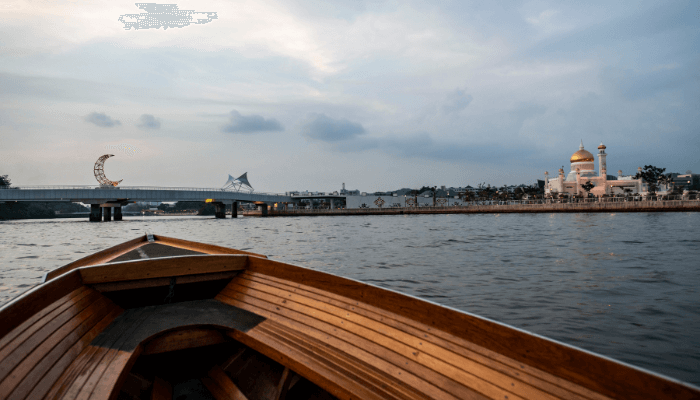

Bandar Seri Begawan gradually transformed from a rural town into an administrative and commercial centre in the 1990s. The harbour at the mouth of River Muara was expanded to accommodate the increasing cargo and passenger traffic.
Commonly known as ‘Bandar’ or port by its residents, the capital is named after Sultan Omar Ali Saifuddin III, the former Sultan of Brunei whose reign is famous for modernization efforts. He is also praised for his social welfare programs and for building public infrastructure in the city.
Port Specifications
The Bandar Seri Begawan waterfront is a picturesque location overlooking the settlement of Kampong Ayer. It covers 5 acres of land area and was opened in 2011. A favourite of the tourists and locals alike, the place is an ideal picnic and sightseeing spot.
The city has a cruise port as well, lying 25 kilometres from the main city centre. It receives over 40 ships annually on its two opposite berths. The facility has waiting rooms, a restaurant, a foreign currency exchange booth, wifi, taxi services, souvenir shops and a helpdesk.
Water taxis are common in Brunei, traditionally called Penambang. They are used for travelling to different coastal settlements located along the Brunei River. Bandar Seri Begawan’s ferry terminal has a single pier for accommodating ferries and small fishing boats. Ferries leave from Temburong to nearby cities and Malaysian coastal towns like Lawas. Passengers can also avail speedboat services while travelling from the small village settlement of Bangar, a famous tourist spot.
Port Economy
The city’s economy is based on manufacturing and agricultural activities. Furniture, timber, wood, dried fish, textiles, handmade pottery, handicrafts and other goods are exported through barges to neighbouring nations.
Tourism is a growing sector and the city has many wonders to flaunt. One such is the Omar Ali Saifuddin Mosque, one of the largest mosques in Southeast Asia, possessing a golden dome and marbled walls.
There are more than four museums in the city, several water parks and traditional markets. Pasar Malam is situated a few kilometres from the ferry terminal. Farmers and small producers set up stalls for selling fruits, vegetables, chicken, sate, fertilisers, potted plants and much more.
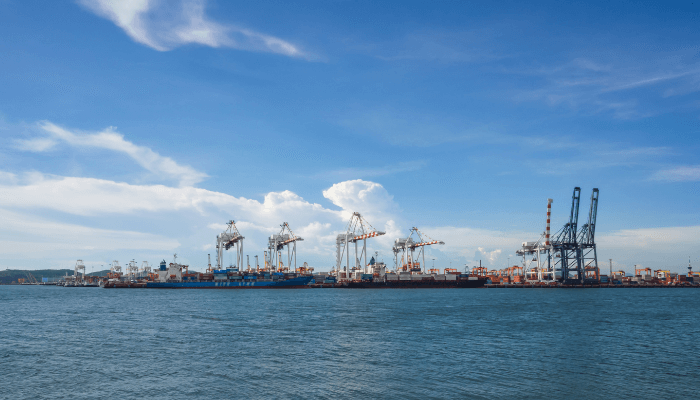

Part of the Belait province, the town of Kuala Belait is situated on the western end of Brunei. Its harbour lies on the northwestern coast of Borneo, positioned on the eastern banks of the Belait River.
The Maritime and Port Authority of Brunei Darussalam is responsible for port operations and management. However, it is mainly used by the oil and gas company, Brunei Shell Petroleum Corporation Limited. The harbour is strictly closed to the public and acts as a supply and logistics support base for the enterprise.
Port History
The port settlement dates back to the 15th century when it was a traditional fishing village, populated by native Belait Malays. During those times, Kuala Balai, located further upstream, served as the capital. With the discovery of oil in the present-day Seria region, the capital was transferred to Kuala Belait since it was easily accessible via roads and waterways.
It emerged as an important trading post during the British colonisation period. Japanese attacked the town during the second world war however, it was handed to Brunei after the country attained independence in 1984. Important government buildings, hotels and public works were constructed in the 1990s, transforming Kuala Belait into a prominent business district.
Port Services
The Kuala Belait Wharf is close to the Rasau gas fields and Shell has many facilities for aiding oil and gas production. Kuala Belait fueling station provides cooking gas and chemicals to the town’s residents and manufacturing units. The terminal building is situated on the southern part of the harbour and offers logistics support to its customers.
The port also contains a shipyard for constructing fishing boats, small cargo ships and tankers. It has three workshops offering maintenance, repair and painting services.
Port Layout and Linkages
Kuala Belait port is divided into two operational areas. The petroleum pier is 30 metres long with an alongside depth of 12.5 m. It has five mobile cranes with a 25-tonne lifting capacity, electricity and freshwater provisions.
Another 100-metre-long pier is operated by the port authority for receiving consumer products, general cargo and packed goods. It is equipped with two cranes for loading and unloading five tonnes of cargo at once. Adjacent to this pier is two warehouses and a parking lot.
The commercial port of Kuala Belait lies further upstream, near Kampong Sungai Duhon. However, excessive silt and sediment deposition have restricted the port to shallow-draft vessels only. The harbour was dredged and two main breakwaters were recently constructed to prevent silting at the river mouth.
The harbour has trade links with important Malaysian ports. Ships from Kuala Belait also travel to Hong Kong, parts of Indonesia, Thailand and Singapore.
Kuala Belait passenger wharf is close to the oil terminal. Locals can take water taxis from the market waterfront and travel to the former capital of Kuala Balai. Interestingly, tourists can book a sightseeing tour with the town’s boat club and visit the Silver Jubilee park, the teapot roundabout and the Tudong market.
The oil and gas industry of Brunei is based in Seria, an important financial centre of the country. The town overlooks the Seria oil fields which were found in 1929 by geophysicist Straub and engineers F.F. Marriott and T.G Cochrane.
The biggest oil field in the northwestern part of the country, Seria has produced more than a billion barrels of oil in the past seventy years. Its discovery propelled the economic growth of Brunei and provided employment to thousands of people. The oil fields have been continuously operational except during the Japanese attacks and World War II invasions.
In 2004, new oil reserves were discovered in the northern part of Seria by Brunei Shell Petroleum Co. Ltd. A Schlumberger vessel was used for drilling three kilometres offshore at a water depth of 8 metres.
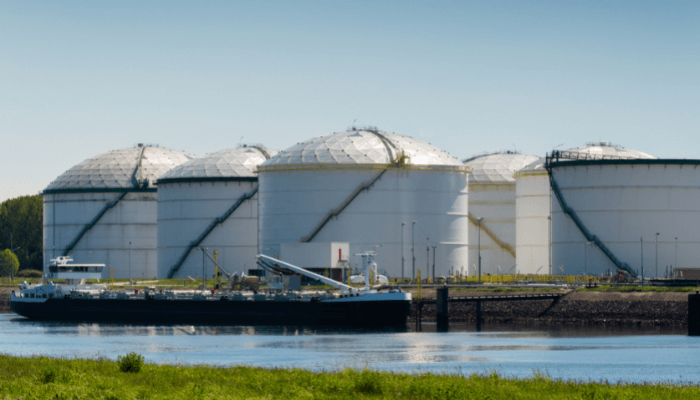

Brunei Shell is based in Panaga, a small town on the northeast coast of Borneo. The company operates the crude oil terminal and provides collection, transportation, storage and shipping facilities for petroleum. A wastewater treatment plant is also located in the vicinity, however, it ceased operations due to environmental concerns.
The Oil terminal is positioned 8 nautical miles from the port of Kuala Belait. It consists of an open pier handling oil and condensates. Three single buoy moorings are situated about 6 nautical miles from the coast. Oil tankers weighing up to 30,000 DWT with a 16.8 m draught can be accommodated. More than 150 vessels visit the facility annually.
The Seria Oil Refinery is the only refinery in the nation. It lies in the Sungai Bera region which is also the site of the Gas Compression unit and the Industrial Park. The facility is linked to all major industries through underground pipelines. About 900 wells were drilled in the oil field and over 300 are still producing enormous amounts of black gold for domestic consumption and export.
The LNG terminal of Lumut is located 2.5 nautical miles offshore from the western coast of Brunei, just 18 kilometres from Seria. The port consists of a 4-kilometre-long pier and a 400-metre berth on the western side. An open sea berth, it is connected to the offshore LNG plant and handles methanol and Liquified natural gas.
It was designed to receive carriers with a maximum LOA of 290 metres, a draught of 12 m, a maximum displacement of 95,000 tonnes and a carrying capacity ranging from 75,000 m3 to 150,000 m3.
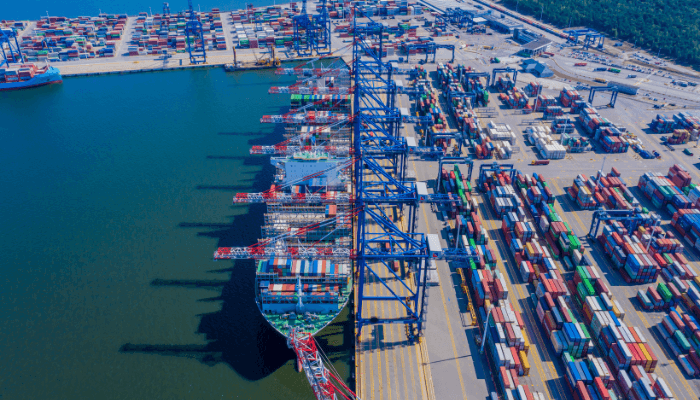

Approximately 200 ships visit the facility every year. LNG is exported to many Asian countries on specially constructed carriers. The loading jetty has four arms and three dolphins supported by fenders, connected to the platform. Equipment like an environment monitoring system and a high alert security system is also fitted at the port terminal. It also has three rotor tugs and a general-purpose boat for aiding berthing operations.
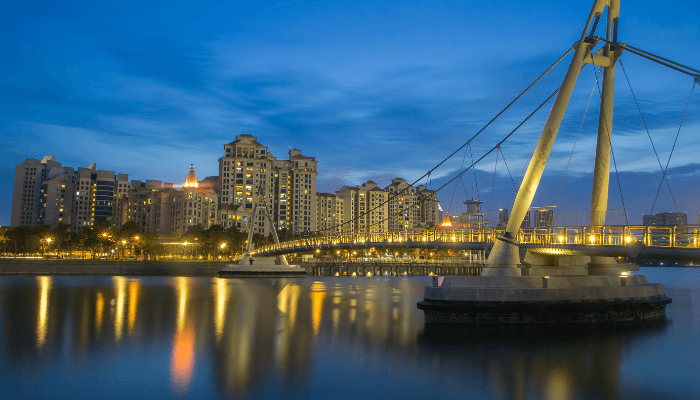

Located near Pulau Kitang island, Tanjong Salirong is a small riverine harbour dealing with forest products like timber, logs, resin, vegetables, fruits and fish. It receives barges which export these commodities to Malaysia.
You might also like to read:
Disclaimer: The authors’ views expressed in this article do not necessarily reflect the views of The Marine Learners. Data and charts, if used, in the article have been sourced from available information and have not been authenticated by any statutory authority. The author and The Marine Learners do not claim it to be accurate nor accept any responsibility for the same. The views constitute only the opinions and do not constitute any guidelines or recommendations on any course of action to be followed by the reader.










We believe that knowledge is power, and we’re committed to empowering our readers with the information and resources they need to succeed in the merchant navy industry.
Whether you’re looking for advice on career planning, news and analysis, or just want to connect with other aspiring merchant navy applicants, The Marine Learners is the place to be.